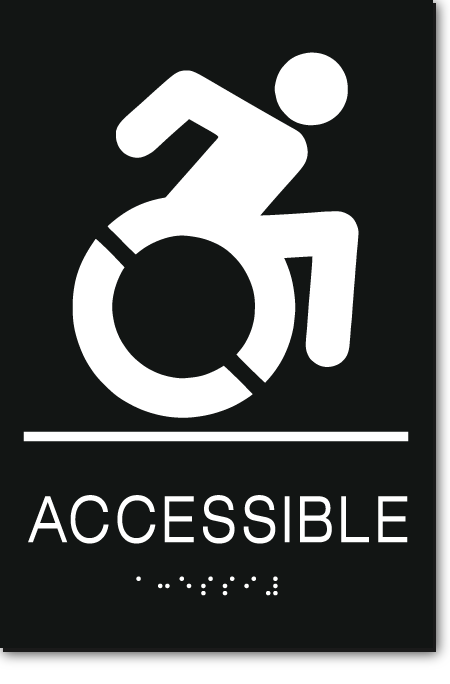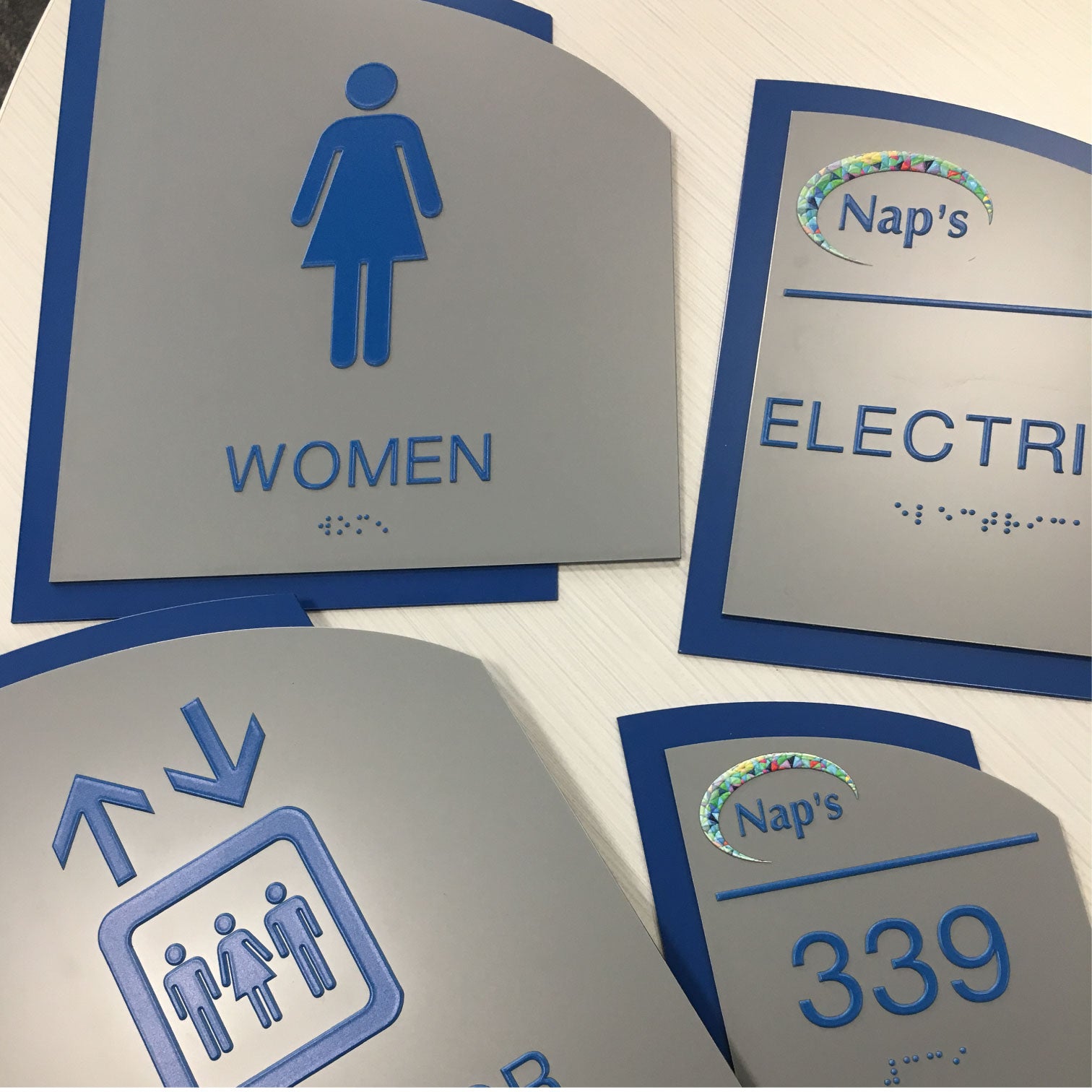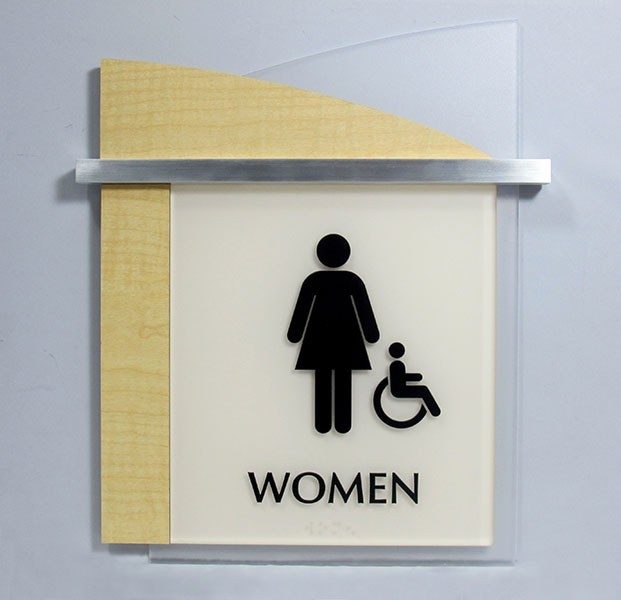The Role of ADA Signs in Following Availability Standards
The Role of ADA Signs in Following Availability Standards
Blog Article
Discovering the Trick Features of ADA Indications for Boosted Access
In the realm of access, ADA signs offer as quiet yet powerful allies, ensuring that areas are comprehensive and navigable for people with disabilities. By integrating Braille and tactile elements, these indications damage obstacles for the visually damaged, while high-contrast color plans and understandable fonts cater to varied visual requirements.
Importance of ADA Compliance
Making sure compliance with the Americans with Disabilities Act (ADA) is critical for fostering inclusivity and equal accessibility in public rooms and workplaces. The ADA, established in 1990, mandates that all public facilities, employers, and transport services suit individuals with impairments, ensuring they appreciate the very same legal rights and opportunities as others. Conformity with ADA standards not only fulfills legal responsibilities however additionally boosts a company's credibility by demonstrating its commitment to diversity and inclusivity.
One of the essential aspects of ADA compliance is the execution of obtainable signage. ADA signs are developed to ensure that people with specials needs can easily browse through buildings and rooms.
In addition, adhering to ADA laws can alleviate the danger of lawful consequences and prospective fines. Organizations that stop working to abide by ADA guidelines might face claims or fines, which can be both monetarily difficult and damaging to their public photo. Therefore, ADA compliance is indispensable to promoting a fair atmosphere for every person.
Braille and Tactile Elements
The consolidation of Braille and tactile elements into ADA signs embodies the concepts of availability and inclusivity. These features are essential for people that are aesthetically damaged or blind, enabling them to navigate public areas with better independence and self-confidence. Braille, a tactile writing system, is crucial in offering composed details in a layout that can be quickly regarded through touch. It is usually positioned underneath the corresponding text on signage to make certain that people can access the info without aesthetic assistance.
Tactile aspects extend beyond Braille and consist of increased signs and characters. These components are designed to be noticeable by touch, permitting people to determine space numbers, washrooms, exits, and various other vital areas. The ADA establishes details standards pertaining to the size, spacing, and positioning of these tactile elements to maximize readability and make sure uniformity throughout different settings.

High-Contrast Shade Plans
High-contrast color pattern play an essential role in boosting the visibility and readability of ADA signs for individuals with aesthetic impairments. These systems are crucial as they make the most of the difference in light reflectance in between text and history, guaranteeing that indicators are conveniently noticeable, even from a range. The Americans with Disabilities Act (ADA) mandates making use of details shade contrasts to fit those with limited vision, making it a crucial element of conformity.
The efficacy of high-contrast shades depends on their ability to stick out in various illumination problems, consisting of dimly lit atmospheres and locations with glare. Normally, dark text on a light history or light message on a dark history is utilized to achieve optimum comparison. Black text on a white or yellow history gives a plain visual difference that helps in fast acknowledgment and understanding.

Legible Fonts and Text Dimension
When thinking about the design of ADA signage, the option of legible fonts and suitable text dimension can not be overemphasized. These aspects are essential for making sure that indications are obtainable to people with aesthetic disabilities. The Americans with Disabilities Act (ADA) mandates that font styles need to be not italic and sans-serif, oblique, manuscript, very attractive, or of uncommon form. These requirements help ensure that the text is conveniently understandable from a range which the characters are appreciable to diverse target markets.
The dimension of the message likewise plays an essential function in ease of access. According to ADA guidelines, the minimal text elevation must be 5/8 inch, and it must enhance proportionally with viewing range. This is particularly essential in public areas where signage needs to be reviewed rapidly and accurately. Uniformity in message dimension adds to a natural visual experience, assisting individuals in navigating environments successfully.
In addition, spacing between lines and letters is essential to readability. Sufficient spacing prevents personalities from showing up crowded, enhancing readability. By sticking to these criteria, developers can dramatically enhance accessibility, making sure that useful reference signs serves its intended objective for all individuals, despite their aesthetic capabilities.
Efficient Positioning Approaches
Strategic placement of ADA signage is crucial for optimizing access and making certain conformity with lawful requirements. ADA guidelines stipulate that signs ought to be mounted at an elevation in between 48 to 60 inches from the ground to ensure they are within the line of sight for both standing and seated people.
In addition, indications need to be placed surrounding to the latch side of doors to permit easy recognition before entrance. Uniformity in indicator positioning throughout a facility boosts predictability, decreasing complication and enhancing total individual experience.

Conclusion
ADA signs play read here an important role in promoting availability by incorporating functions that attend to the requirements of individuals with impairments. These aspects jointly cultivate an inclusive atmosphere, underscoring the value of ADA conformity in making sure equal access for all.
In the realm of access, ADA indicators offer as silent yet powerful allies, making certain that rooms are navigable and inclusive for individuals with disabilities. The ADA, established in 1990, mandates that all public centers, employers, and transportation services suit individuals with disabilities, great site guaranteeing they appreciate the very same civil liberties and chances as others. ADA Signs. ADA signs are designed to guarantee that people with impairments can quickly navigate via structures and spaces. ADA guidelines stipulate that indicators ought to be placed at a height in between 48 to 60 inches from the ground to guarantee they are within the line of sight for both standing and seated people.ADA indications play an important duty in promoting accessibility by integrating functions that address the demands of individuals with specials needs
Report this page